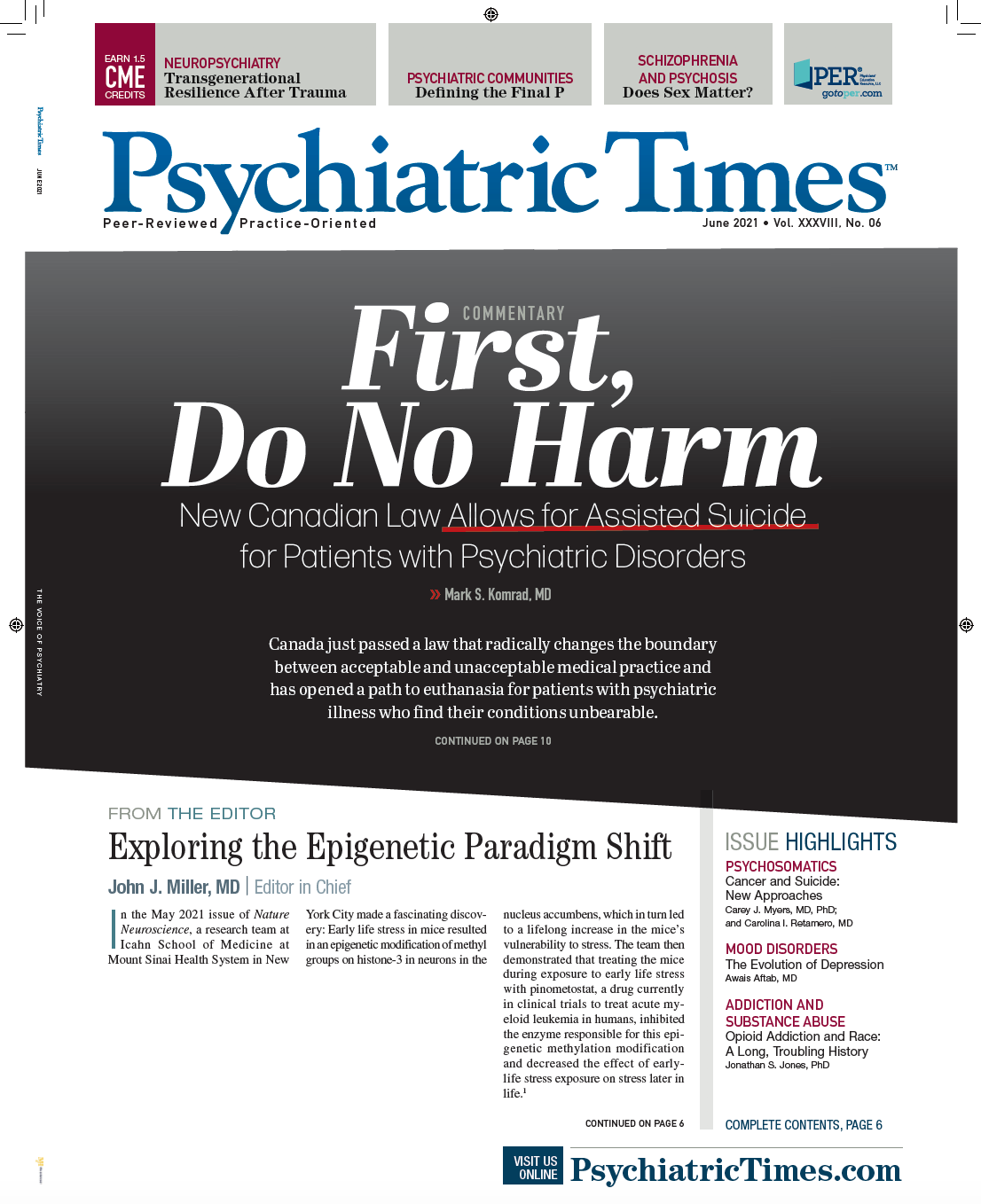Publication
Article
Psychiatric Times
War—What Is It Good For? Perhaps Modern Psychopharmacology
Author(s):
Sometimes the war represented more of a hiatus in ongoing research, which was later resumed. In other cases, it led to displacement or imprisonment.
PatSM/AdobeStock

CLINICAL REFLECTIONS
Modern psychiatry—and modern psychopharmacology—is a relatively young field. In fact, the word antidepressant was coined in 1952, tranquilizer in 1953, and antipsychotic was first used at a medical meeting in 1956—and the acceptance of all was slow. Over the next 2 decades, these types of medicines were developed. Interestingly, most of the drug discoveries occurred inadvertently, often beginning with a chance observation by a physician or scientist who was looking for something else.
Key Figures From World War II
Many key figures in modern psychopharmacology were caught up in World War II in some way.1 For instance, Henri Laborit, MD, of France, who initiated the use of chlorpromazine for psychoses, and Australian John Cade, MD, who made the modern rediscovery of lithium for bipolar disorder, were military physicians. In both cases, wartime experiences obviously influenced their work. Laborit was aboard a French destroyer struck by torpedoes during the evacuation of Dunkirk and was awarded a Military Cross for his actions during its sinking. After the development of chlorpromazine, he quickly suggested that it might be useful in managing stress in wounded soldiers on the battlefield (which proved to be an unsuccessful, even disastrous, endeavor). Meanwhile, Cade volunteered to serve in the Australian Army; he was stationed in Singapore until he was captured and spent several years as a prisoner of the Japanese. While caring for fellow prisoners of war, he noticed fluctuating levels of mental clarity and wondered if this phenomenon was related to changing amounts of substances circulating in thsubstances, foreshadowing the later studies he performed that led to lithium’s use in what was then called manic depression.
Frank Berger, MD, who went on to discover meprobamate, the first modern tranquilizer, was a young physician in the Czechoslovakian National Institute of Health who fled Nazi occupation of his country. Arriving in Britain in 1939, he first worked providing medical care in refugee camps. Leo Sternbach, PhD, born in what is now Croatia, was an organic chemist who had experienced anti-Semitism firsthand in Poland. He was working for Hoffmann-LaRoche Company in Basel, Switzerland, when Germany invaded Greece and Yugoslavia in 1941. Facing an increasingly precarious situation, he fled through France and Portugal and came to the United States, where he discovered the first benzodiazepine tranquilizer. Chemist Charles Suckling, PhD, who worked on Britain’s secret atomic bomb research and served in the Home Guard when away from the laboratory, later applied some of his newfound techniques to develop the anesthetic halothane.
Prominent Figures From Earlier Wars
Other influential scientists emerged from earlier battles. William A. Hammond, MD, who made observations with lithium in bipolar disorder in the 1870s, was Surgeon General of the Union Army during the American Civil War.1 Hans Berger, MD, served in the German cavalry in 1892 and was almost killed in a riding accident. His resulting curiosity about the workings of the nervous system led to the discovery of human electroencephalography. His story continued and ultimately included suffering at the hands of the Nazis, who took over his university in the 1930s. Constantin von Economo, MD, the Austrian psychiatrist and neurologist who described encephalitis lethargica and the role of hypothalamic structures in sleep and waking, was an army pilot in northern Italy in 1916.1 Charles Sherrington, FRCP, FRCS,whose studies with Edgar Adrian, MD, clarified the processes of nerve cell communication, worked in a shell factory 13 hours a day during World War I, while Adrian treated war casualties at St Bartholomew’s Hospital in London. Alexander Fleming, FRS, FRCS, whose later discovery of penicillin profoundly affected psychiatry by providing a treatment for tertiary syphilis, served in World War I, in which his studies of evolving wounds led to his later discoveries.3
Developments in Neuroscience
The broader field of neuroscience developed in the post–World War II years, with its founders having pivotal wartime experiences. Otto Loewi, PhD, whose experiments confirmed chemical transmission across synapses, was imprisoned by the Gestapo on the night of the German invasion of Austria. He was stripped of all his possessions, but he was later allowed to emigrate on the condition that he transfer the funds from the Nobel Prize he had earned in 1936 to a Nazi-controlled bank.2 An American self-taught scientist, Alfred Lee Loomis, DSc, JD, discovered the K-complex in the electroencephalograph and first classified the sleep stages, then went on to play a crucial role in developing military radar in World War II.2 Sir Alan Lloyd Hodgkin’s experiences living in wartime Britain, and involvement in radar research impacted him so deeply that much later, at age 78, he felt the need to return to the World War II years in his last major work, Chance & Design: Reminiscences of Science in Peace and War.4 As a medical student, Arvid Carlsson, MD, PhD, examined concentration camp prisoners who had been released to neutral Sweden. The encounter so impressed him that he talked about it at length in the biography he wrote to accompany his Nobel Prize 56 years later. Starting in his 60s, Laborit wrote extensively on the applications of neuroscience to aggression and violence.
The remarkable thing about these stories is the variability of these experiences.2 Sometimes the war represented more of a hiatus in ongoing research, which was later resumed. In other cases, it led to displacement or imprisonment. Sometimes the result was devastating and culminated in suicide, while in other cases it was a stimulus leading to advances in research. It is a good reminder that, sadly, war is intimately involved in the human condition, and more specifically, that in order to understand the blossoming of neuroscience and psychopharmacology in the 1950s and 1960s, it is useful to take into account the wartime experiences of the founders.
Dr Mendelson is a professor of psychiatry and clinical pharmacology (ret) at the University of Chicago. His recent books include Molecules, Madness, and Malaria: How Victorian Fabric Dyes Evolved into Modern Medicines for Mental Illness and Infectious Disease and Nepenthe’s Children: The History of the Discoveries of Medicines for Sleep and Anesthesia. Portions of this article are adapted from The Curious History of Medicines in Psychiatry and Trial by Fire: World War II and the Founders of Modern Neuroscience and Psychopharmacology, which are available on Amazon.
References
1. Mendelson WB. The Curious History of Medicines in Psychiatry. Pythagoras Press; 2020.
2. Mendelson WB. Trial by Fire: World War II and the Founders of Modern Neuroscience and Psychopharmacology. Pythagoras Press; 2021.
3. Mendelson WB. Molecules, Madness and Malaria: How Victorian Fabric Dyes Evolved into Modern Medicines for Mental Illness and Infectious Disease. Pythagoras Press; 2020.
4. Hodgkin A. Chance & Design: Reminiscences of Science in Peace and War. Cambridge University Press; 1992. ❒







